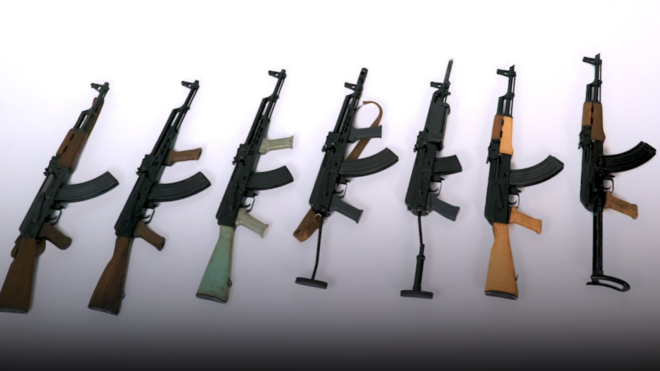Over 30 countries produced AK rifles. And even if you’re an expert, sometimes the only way to tell them apart is to look at the markings on the receiver. But thankfully that is not the case with Hungarian AKs, most variants from that country look like nothing else, and even more plain-looking newer models have some small features that allow nerds like me to easily identify them.
I’ve been (un)lucky to inspect and attempt to repair hundreds of Hungarian AKs, mostly around Basra in Iraq. Some AKs from Hungary were the best guns I’ve seen, and some others were the biggest nightmare I ever faced in my professional career. But let’s start with the history.
The History of Hungarian AKs
May of 1955 was a busy time at the factory #74 in Izhevsk. The plant was beginning production of the new AK variant, which the factory called the “lightened model”. Years later, US collectors would start calling it “Type 3”, the last Soviet AK with a milled receiver, machined from a solid block of steel.
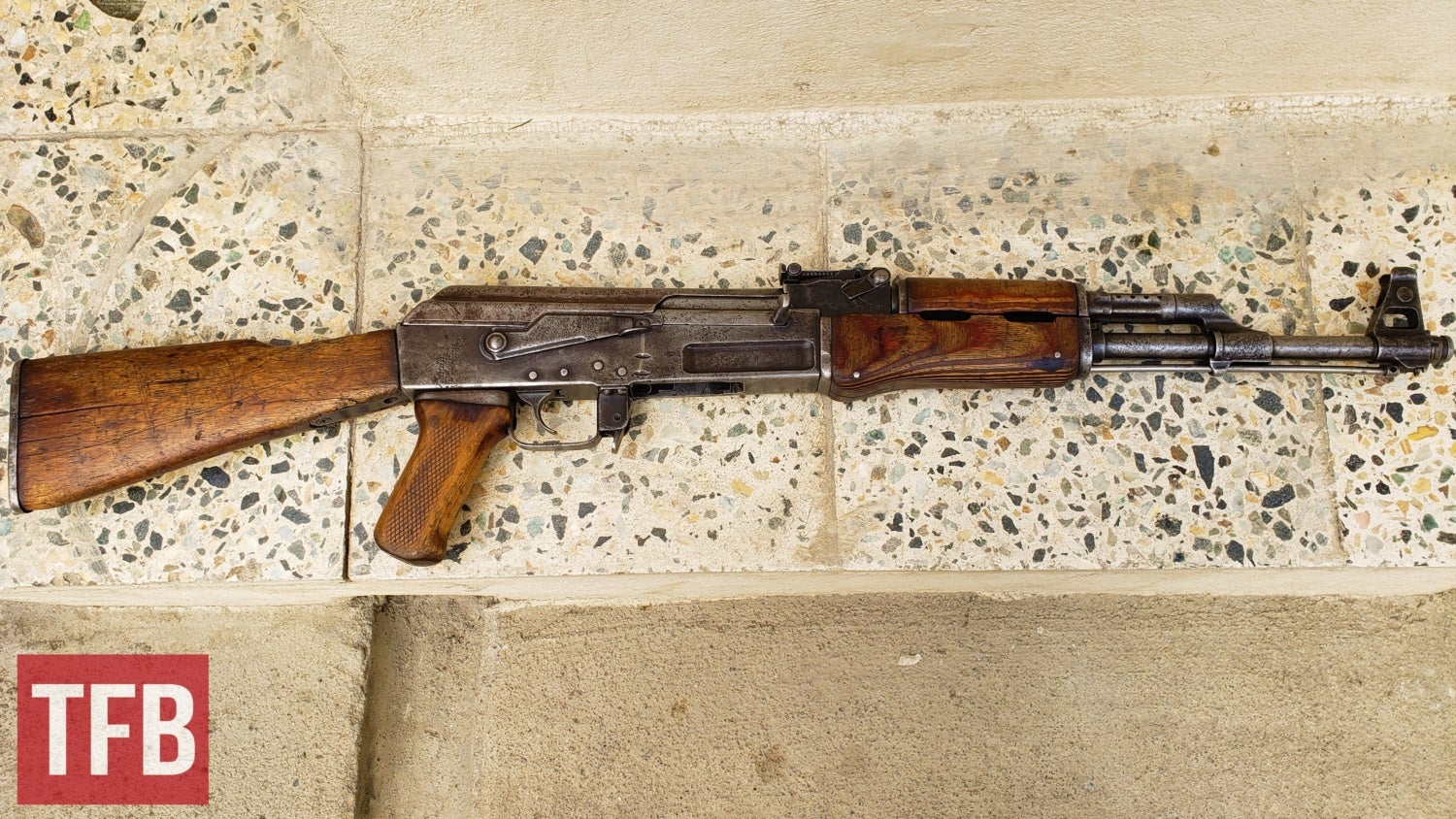
Typical Type 3 Soviet AK photographed in Kabul
But production of the new gun wasn’t the biggest challenge. The factory had to prepare for two truly unthinkable tasks – first, they had to ship their top-secret Kalashnikov rifles to several foreign countries: Czechoslovakia, Poland, Romania, and Hungary.
The second task was even more unbelievable for the Soviet engineers – they had to host several teams of foreigners and tell them everything about AK production. In a country where you weren’t allowed to travel abroad, meeting a foreigner was a big deal. Seeing one at the defense-related factory – unthinkable.
Not only the factory was classified at the time, but the entire city was closed off and erased from some of the maps. Even the gun itself was still top secret, even though it had been used by Soviet troops since 1949.
My father served in the army at that time. In their unit, outside of the shooting range, troops were prescribed to carry the gun only inside a special cotton case. Soldiers were also not allowed to carry an AK on guard duty or any other task not directly related to combat training or operational use.
After firearms training, they picked up every empty casing for the AK, leaving the rest of the casings on the ground. The state was not afraid of brass goblins, they were concerned that spies would pick up the brass and figure out that the Soviet army was using a new weapon.
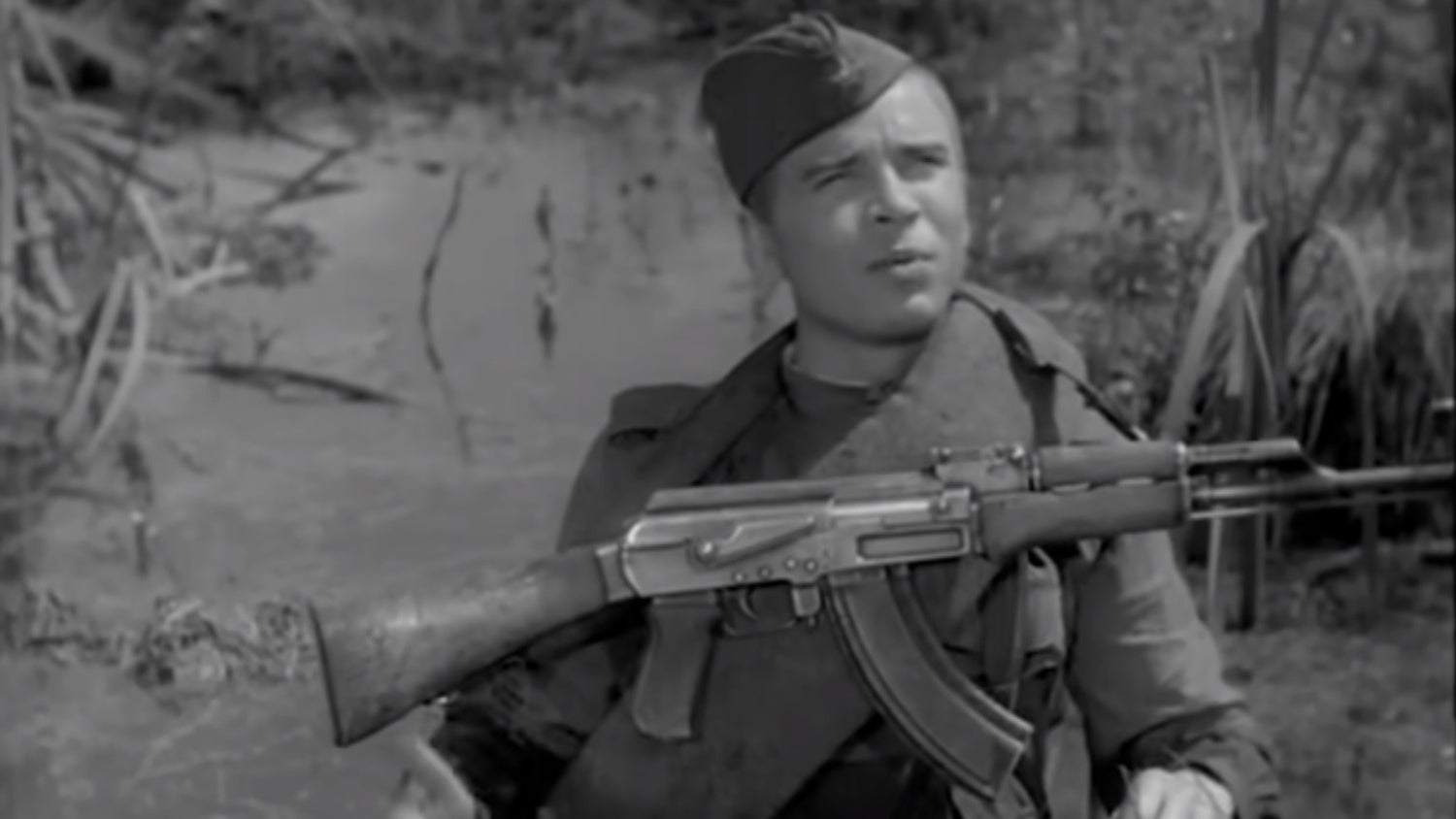
Screenshot from the movie “Maksim Perepelitsa” with a classic Type 2 AK
Only in 1956, the veil of secrecy was lifted, when an AK appeared in the Soviet comedy “Maksim Perepelitsa”, a movie about a village troublemaker joining the army and becoming an exemplary soldier.
But for the rest of the world, the first images of AKs didn’t come for a fun and cheerful comedy with a pinch of Soviet propaganda, but from scenes of urban warfare during the Hungary uprising in 1956.
Some Hungarian rebels managed to take AKs as trophies and it was the first time when the world saw this assault rifle that later became one of the most prominent firearms in the history of humanity. One of the founders of TFB wrote an entire article about József Tibor Fejes, a young rebel in a bowler hat who was photographed with AK on the streets of Budapest.
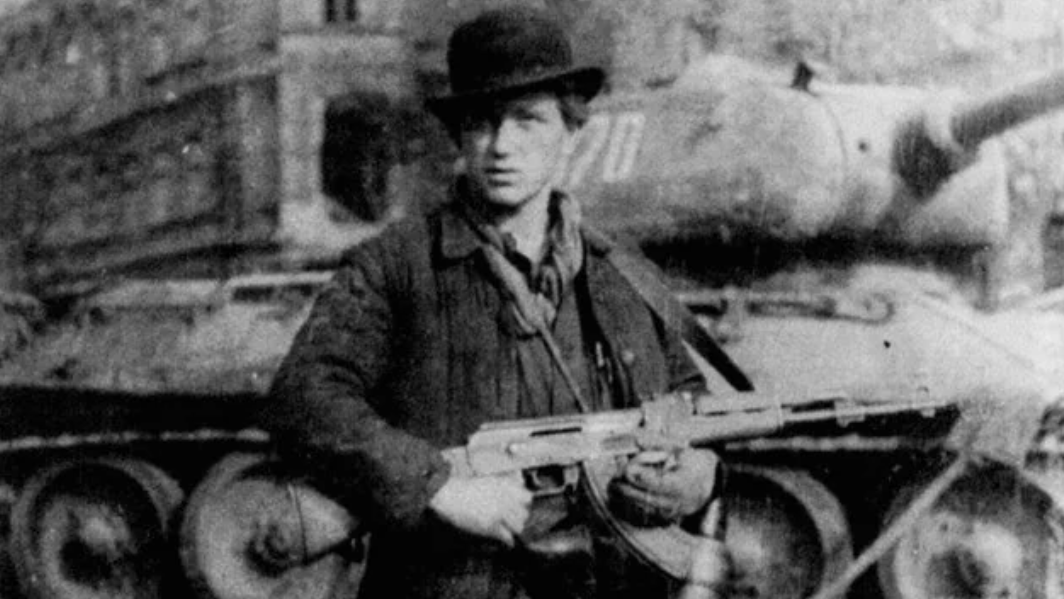
One of the photographs of the 1956 Hungarian Uprising – József Tibor Fejes, with his AK
The uprising didn’t change the course of history for Hungary and in 1959, the first Hungarian AKs left the factory known as FEG located in the beautiful capital of the country. Milled receivers were manufactured in a separate location at a small factory called Danuvia.
It was a direct copy of Type 3 Soviet AK, well made, without any significant additional features. It was officially called AK-55 and had signature Hungarian markings that were used throughout the entire production of the rifles.
The selector markings on the receiver were quite interesting – full auto mode was represented quite poetically with an infinity sign, and semi-auto was marked simply with the number “1”. On the rear sight, Hungarian AKs have a letter “A” representing battle zero.
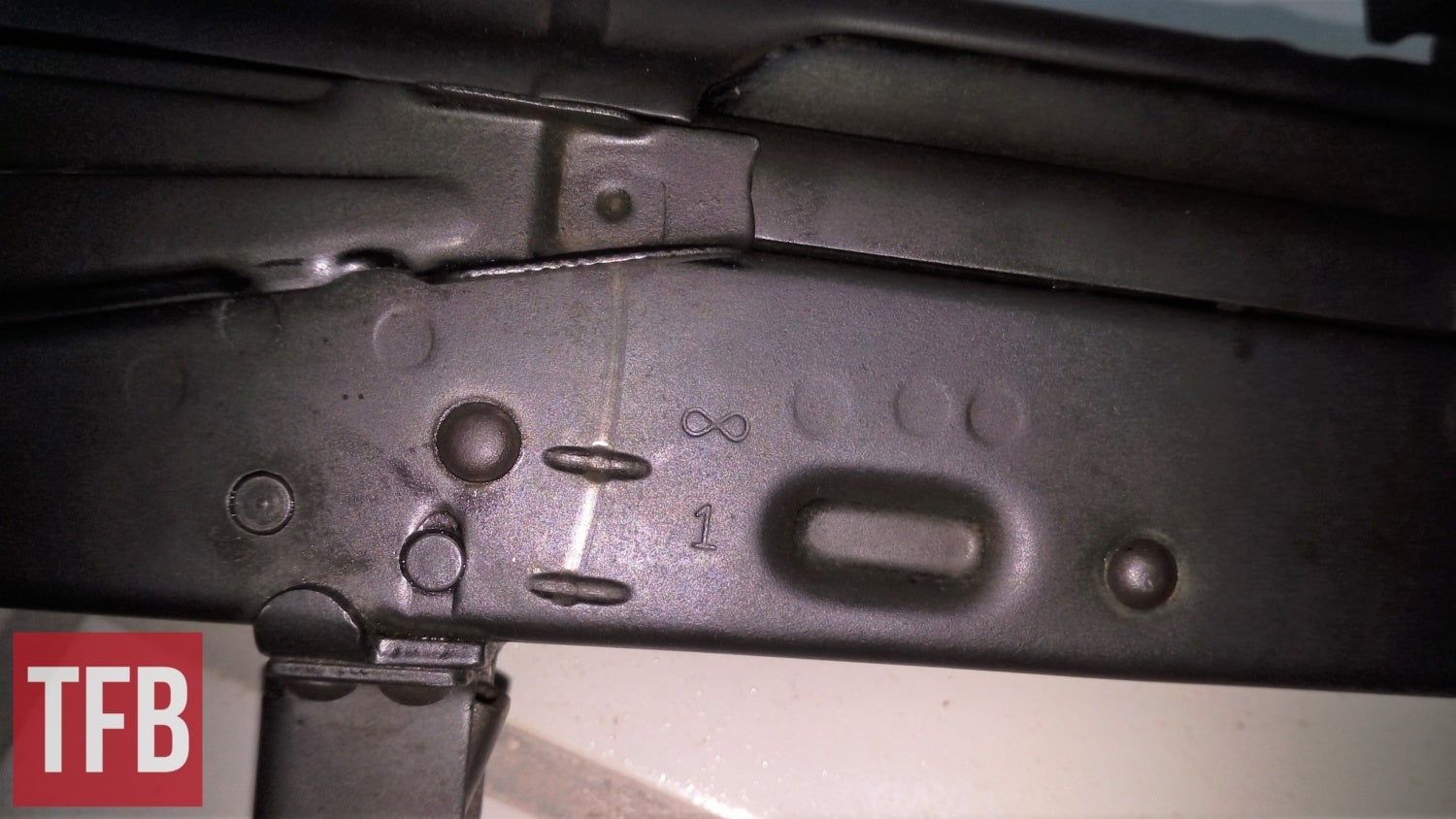
Standard selector markings for all Hungarian AKs
Hungarian AKM-63
According to declassified documents, in 1961, Hungary received a full transfer of technology for an AKM rifle with a stamped receiver. Another team of Hungarian engineers came to the Izhevsk factory for training, both in manufacturing techniques and quality control and military acceptance procedures.
But Hungarian AKM was significantly different from its Soviet counterpart. You can always recognize it by the front grip on a sheet steel handguard with an exposed gas tube. The front grip design was genius – it was the standard pistol grip, just installed backward.
As a result, during reloads, the bottom of the magazine often bumped into the front grip, slowing down the magazine changes.
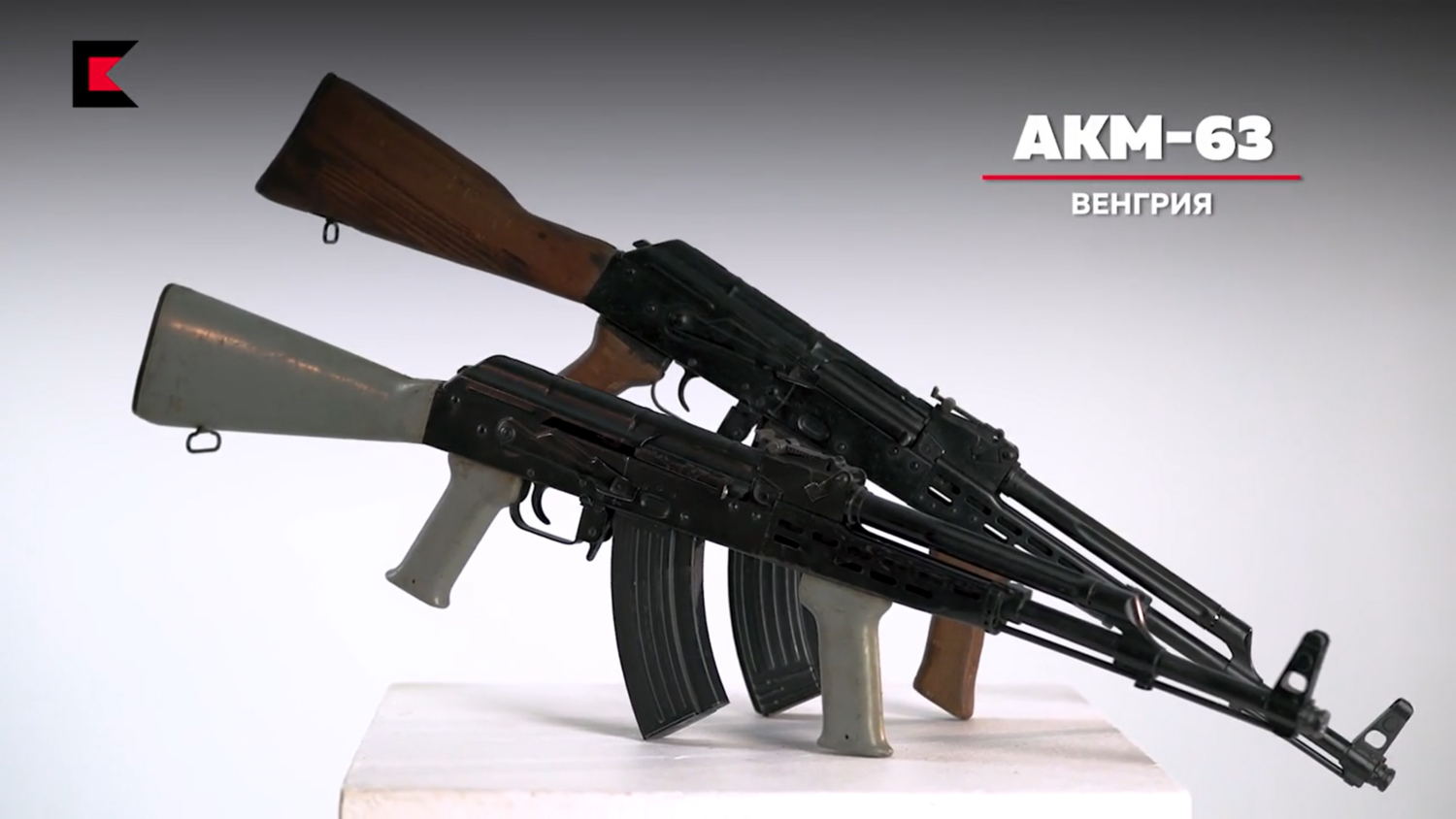
Two AKM-63s. Screenshot from the documentary “Kalashnikov: Around the World” which the author created 6 years ago.
Hungary was among the first countries that started experimenting with plastic for pistol grips and stocks. Since the country could not produce advanced polymers at the time, the plastic for AK furniture was procured overseas. Due to sanctions, Hungary could not buy military-grade polymer and settled for what was supposed to be “just as good”, some food-grade plastic.
It was fragile and had a remarkable turquoise color. To help with structural integrity, engineers got rid of a cavity for a cleaning kit inside a stock to make it more durable.
I always wanted to see this variant “in the field” and was really happy when I encountered one in the province of Puntland in Somalia, a former pirate haven that is now one of the most developed parts of Somalia. It was missing a front grip but still had original furniture.

AKM 63 photographed in Puntland, Somalia
In Part 2 of this article, we will talk about perhaps the most famous Hungarian AK – short AMD-65 and why it was hated by many people including the author.
The author would like to thank Hungarian researcher Zoltán Szőrös for all the knowledge he shared with me over the years and Pavel Pticin for his invaluable contribution to this research.
 Your Privacy Choices
Your Privacy Choices
